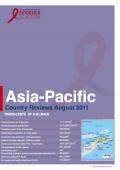What's New
Displaying results 3181 - 3190 of 4052
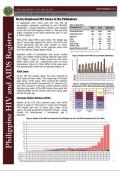
Resource | Fact Sheets,
In September 2011, there were 253 new HIV Ab seropositive individuals confirmed by the STD/AIDS Cooperative Central Laboratory (SACCL) and reported to the HIV and AIDS Registry (Table 1). This was 65% higher compared to the same period last year (n=153 in 2010) [Figure 1].
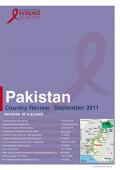
Resource | Reviews and Snapshots,
The first case of AIDS in a Pakistan citizen was reported in 1987 in Lahore. During the late 1980s and 1990s, it became evident that an increasing number of Pakistanis, mostly men, were becoming infected with HIV while living or traveling abroad. In 2009, the estimated the number of people living with HIV in Pakistan stood at 98,000 [79,000-120,000], of which 28,000 [23,000-35,000] were women.
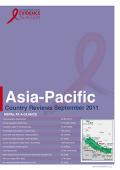
Resource | Reviews and Snapshots,
Since the first case of AIDS was reported in 1988, HIV in Nepal has evolved from a "low" to a "concentrated" epidemic. According to 2010 UNAIDS Report on Global AIDS Epidemic, by the end of 2009, an estimated 64,000 [51,000 - 80,000] adults and children (up from 60,000 in 2001) were living with HIV of which 20,000 [16,000-25,000] were women 15 years and older.

Resource | Reviews and Snapshots,
The first case of HIV was reported in 1987 in an expatriate, while the first Maldivian national with HIV was reported in 1991. The total estimated number of people living with HIV in the Maldives had remained at less than 100 since 2001 when HIV screening was initiated.
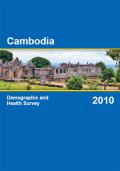
Resource | Publications,
The 2010 Cambodia Demographic and Health Survey (CDHS) is a nationally representative sample survey of 18,754 women and 8,239 men age 15-49. The 2010 CDHS is the third comprehensive survey conducted in Cambodia as part of the worldwide MEASURE DHS project. The primary purpose of the CDHS is to provide policymakers and planners with up-todate, reliable data on fertility; family planning; infant, child, and maternal mortality; maternal and child health; nutrition; malaria; knowledge of HIV/AIDS, and women’s status.

Resource | Publications,
The behavioural surveillance survey (BSS) research conducted by the National Research Institute at Oil Search Limited provides data for the NDoH National Surveillance System for monitoring behavioural trends with more-at-risk populations over time. The research is also conducted for OSL and the NDoH/ADB HIV Prevention in Rural Enclaves Project, to be used as a baseline for the monitoring and evaluation of their HIV project. The BSS research findings are based on a representative sample of 463 OSL workers and can support further tailoring of the OSL HIV prevention response to minimize the impact of the HIV epidemic on their workforce and their surrounding communities.
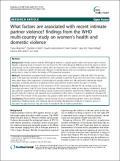
Resource | Publications,
Intimate partner violence (IPV) against women is a global public health and human rights concern. Despite a growing body of research into risk factors for IPV, methodological differences limit the extent to which comparisons can be made between studies. We used data from ten countries included in the WHO Multi-country Study on Women’s Health and Domestic Violence to identify factors that are consistently associated with abuse across sites, in order to inform the design of IPV prevention programs.
IPV prevention programs should increase focus on transforming gender norms and attitudes, addressing childhood abuse, and reducing harmful drinking. Development initiatives to improve access to education for girls and boys may also have an important role in violence prevention.
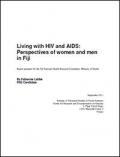
Resource | Publications,
This report presents the results of the study entitled Discourses and Representations of HIV in Fiji and their Impact on the Experience of People Living with HIV and AIDS.
This study, as originally conceived and described in the research proposal submitted to the Fiji National Health Research Committee, aimed to investigate the discourses and representations of HIV and AIDS in Fiji and how they impact the experience of people living with the virus. This research had three initial objectives: 1) to examine how HIV and AIDS had been presented and represented at the institutional level (government, nongovernmental organizations (NGOs), churches) since the advent of the first reported cases in 1989; 2) to explore how the population of Fiji perceived and interpreted the infection; 3) to analyse the biographies of people living with HIV and how they experienced the virus in the Fijian context.
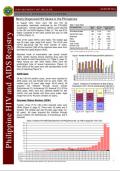
Resource | Fact Sheets,
In August 2011, there were 196 new HIV Ab seropositive individuals confirmed by the STD/AIDS Cooperative Central Laboratory (SACCL) and reported to the HIV and AIDS Registry (Table 1). This was 81% higher compared to the same period last year (n=108 in 2010) [Figure 1].






